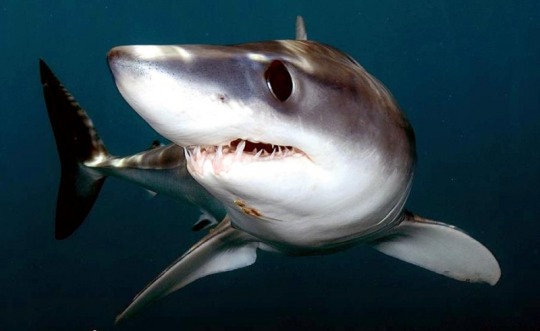Text
Sexual Segregation of Pelagic Sharks and The Potential Threat From Fisheries simplified (PDF)
If you haven't seen last post, it was a link to an interesting study ran to help protect sharks and find out about sexual segregation in sharks. Here, I've used ChatGPT to simplify it and some of its words. It's 7 pages long and includes a table of contents. Originally I was going to change the backround colour to cream, which I did do in Libreoffice, but when I converted it to a PDF the cream got licked off by a goat.
hosted by Mega.
#shark#marine biology#marine animals#sharks#pdf#sexual segregation#mako shark#dyslexia#neurodivergent#libreoffice
0 notes
Text
a study on sexual segregation of pelagic sharks and the potential threat from fisheries by NLM, focusing on mako sharks, our current topic and shark on this blog. For people who find the writing too complicated, we will post a seperate text that is a rephrasing of the text but simplified by AI.
3 notes
·
View notes
Text

To start off this blog, check out this record-breaking Lamniform! The eyes can be a dead giveaway to who this guy is- the shortfin mako shark (also known as the Isurus Oxyrinchus (scientific name, named in 1810), bonito shark or blue pointer). Found in offshore temperate and tropical waters, the shortfin mako achieved the Guinness World Record on the 18th November 2011 for the fastest shark in the ocean with a top speed of 60 mph! That's as fast as some UK motorways, so don't expect to outswim them if you're on the run from them.
🦈
Quick facts:
Class:Chondrichthyes (jawed, cartiliginous fish and shark)
Subclass:Elasmobranchii
Genus: Isurus
Subdivision: Selachimorpha
Diet: mostly cephalopods (such as squid, octopus and cuttlefish), seabirds, porpoises and bony fish like mackerels, tunas, bonitos and even swordfish. They catch their prey by jumping up and tearing bits from their sides and fins. Makos swim underneath their prey so they can see above and have a good chance of getting to the prey before it sees them.
Lifespan: 29 years (M), 32 years (F)
Long ago, the Māori people in New Zealand wore necklaces and earrings made from shark teeth. The word "Mako" in their language means either "shark" or "shark tooth." Although longfin makos don't live in the waters around New Zealand, shortfin makos do, especially in the northern part of the country.
🔗links 🔗
Shark Trust (charity): British Sharks | The Shark Trust
2 notes
·
View notes